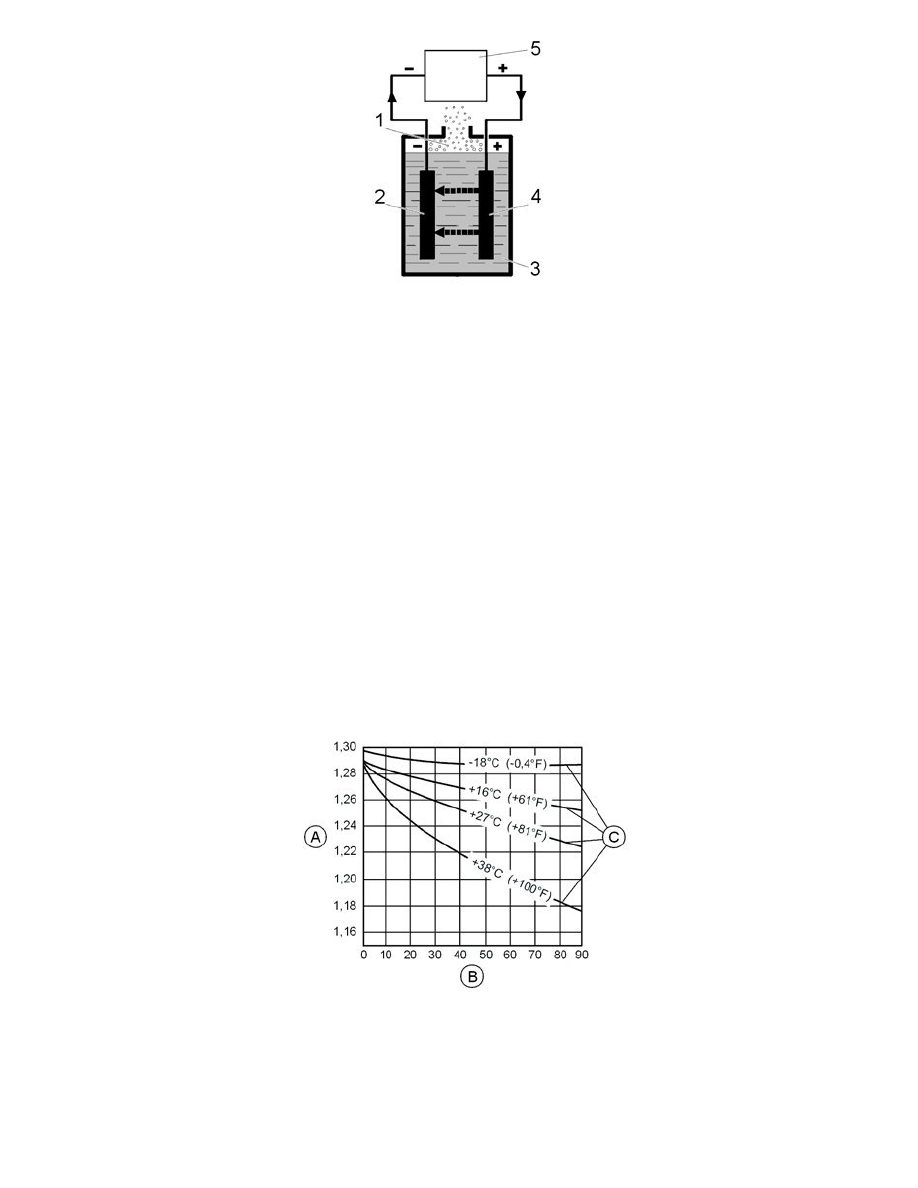V40 L4-1.9L Turbo VIN 29 B4204T3 (2002)

Gas build up
1. Gas build up at the plates
2. Negative plate
3. Electrolyte
4. Positive plate
5. The power supply from the generator or the external battery charger.
Gas builds up at the end of the charging process when charging a lead battery. When the battery has reached 85-90% of the maximum capacity, the water
in the electrolyte begins to separate into oxygen (O2) and hydrogen (H2). Oxygen is formed at the positive plate and hydrogen at the negative plate.
Gas build up results in a loss of some of the gas from the battery, because the battery must not be fully sealed. Because the water is lost, the electrolyte
level in the battery will drop. New distilled or deionized water must therefore be added to prevent damage to the plates as a result of the electrolyte level
being too low. If new water is not added when necessary, the plates may come into contact with the air. This would result in corrosion, reducing the
capacity of the battery.
For maintenance-free batteries as well as sealed batteries (AGM), normally no gases are released. This means that the battery water is not consumed in
the electrolyte and topping up of battery water is not necessary. Also, the design of the battery box does not permit topping up of battery water.
Warning! If oxygen and hydrogen are mixed in the right proportions, oxyhydrogen is formed. Such mixtures are extremely explosive. Be
extremely careful to avoid personal injuries and material damages.
Warning! Make sure that the battery charger is turned off before the terminals are disconnected. This is to prevent sparks, which may ignite
the oxyhydrogen.
Note! Ensure good ventilation.
Self-discharge
Example of self-discharge (for open battery type) depending on battery temperature and discharge time
-
A. Acid density in g/cm3
-
B. Number of days that the battery was not under load
-
C. Acid density at different battery temperatures.
There is always some self-discharge in a battery, when the battery is not in use and during both charging and discharging. If a battery is not used for a
longer period, there is considerable self-discharge. The acid density falls and the active material in the plates is converted to lead sulphate. Excessive
discharge must be avoided because otherwise there is an increased risk of sulfation. Sulfation may cause permanent damage to the battery. Regular
charging of the battery will prevent sulfation. See Sulfation. There is an increased risk of damage from freezing in a heavily discharged battery. See
